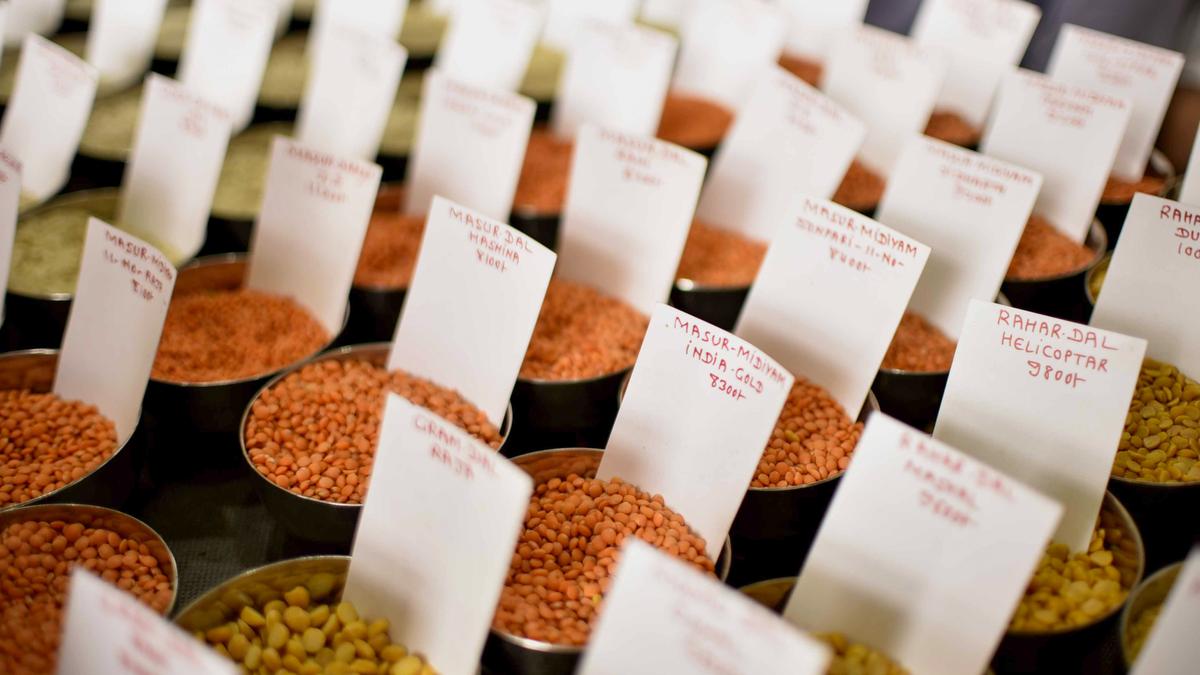Pulses Production in India: Pathways to Atmanirbharta

- 06 Sep 2025
In News:
Pulses hold a unique place in India’s agricultural economy, food security, and nutritional well-being. As a protein-rich staple in largely vegetarian diets, they not only address malnutrition but also contribute to sustainable farming through nitrogen fixation, low water requirements, and reduced carbon emissions. Despite being the world’s largest producer and consumer of pulses, India continues to import sizeable quantities, making self-reliance a critical national goal.
Current Scenario and Progress
India cultivates 12 pulse crops across kharif, rabi, and summer seasons, supported by diverse agro-climatic conditions. Production, however, is highly concentrated—Madhya Pradesh, Maharashtra, and Rajasthan together account for over 55% of total output, while the top 10 states contribute more than 91%.
Historically, the sector suffered from low yields and import dependence. Production declined to 16.35 million tonnes (MT) in 2015–16, forcing imports of nearly 6 MT. However, government interventions such as the National Food Security Mission (NFSM) and higher Minimum Support Prices (MSP) have significantly reversed this trend. By 2022–23, production surged by 59.4% to 26.06 MT, while productivity improved by 38%. Import dependence fell from 29% to just 10.4%, marking substantial progress.
Yet, challenges remain. Nearly 80% of pulses cultivation is rain-fed, leaving it vulnerable to monsoon fluctuations. The sector supports the livelihood of over five crore farmers, making policy stability and targeted support crucial.
NITI Aayog’s Roadmap
Recognising the pivotal role of pulses, NITI Aayog released a report titled “Strategies and Pathways for Accelerating Growth in Pulses towards the Goal of Atmanirbharta” in September 2025. The report projects domestic production to reach 30.59 MT by 2030 and 45.79 MT by 2047, thereby reducing imports and strengthening India’s food sovereignty.
Key Recommendations:
- Area Retention and Diversification – Establish region-specific crop clusters to optimise land use.
- Technology Adoption – Promote customised technologies suited for varied agro-ecological zones.
- Seed Quality and Distribution – Ensure timely availability of high-quality seeds, with special focus on 111 high-potential districts that account for 75% of national output.
- Cluster-Based Hubs – Implement the “One Block–One Seed Village” model through farmer producer organisations (FPOs) to enhance productivity.
- Mission for Atmanirbharta in Pulses – A six-year initiative targeting key crops such as pigeonpea, black gram, and lentil to fast-track self-sufficiency.
According to NITI Aayog, India could achieve self-sufficiency in pulses within the next decade if the current pace of growth is sustained.
Nutritional and Environmental Significance
Pulses are indispensable in addressing India’s protein deficiency and micronutrient gaps, particularly in iron and folate. Their role in combating hidden hunger makes them vital to achieving Sustainable Development Goals (SDGs) related to nutrition.
Environmentally, pulses act as natural soil enrichers through nitrogen fixation, reduce dependence on chemical fertilisers, and have a lower water footprint compared to cereals. Thus, scaling up their production aligns with both climate resilience and sustainable agriculture goals.
Conclusion
India has made commendable progress in reducing import dependence and improving productivity in pulses production over the past decade. However, achieving complete self-sufficiency requires sustained, region-specific strategies, robust seed systems, and technology-driven interventions. NITI Aayog’s roadmap, backed by focused initiatives like the Mission for Atmanirbharta in Pulses, provides a viable pathway.
By 2047, India not only aims to meet its domestic demand but also emerge as a global leader in pulses production—ensuring food security, nutritional well-being, and environmental sustainability for its growing population.
